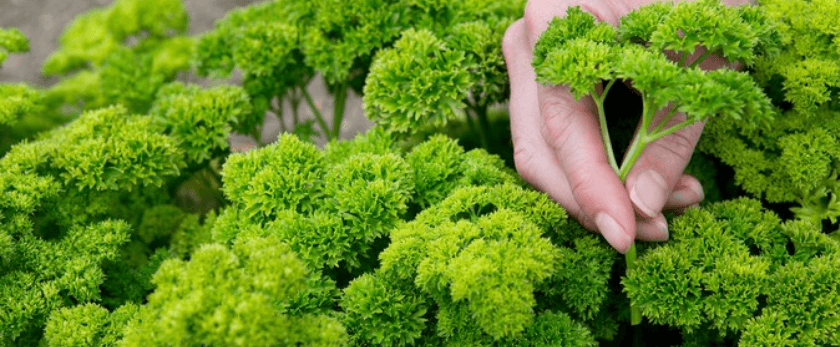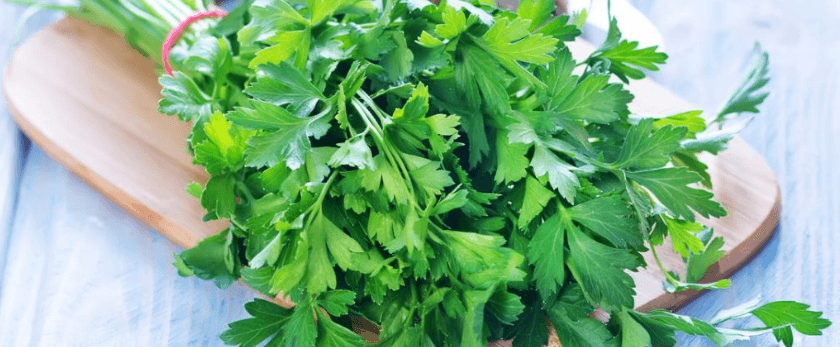Are you tired of constantly buying expensive herbs from the grocery store, only to have them wilt and go bad within a few days? Why not try growing your own parsley at home? Not only is it a cost-effective option, but it also allows you to have fresh, flavorful herbs at your fingertips whenever you need them. Plus, growing your own herbs is a great way to reduce your carbon footprint and contribute to a more sustainable future. In this article, we'll discuss everything you need to know about growing parsley, from caring for it to common problems and the best time to grow. Let's get started!
How to Care for Parsley
Parsley is a relatively low-maintenance herb, making it a great option for beginner gardeners. Here are some key points to keep in mind when caring for your parsley plant:
Watering
Parsley plants prefer consistently moist soil, but not waterlogged. It's important to water your parsley regularly, especially during hot and dry weather. However, be careful not to overwater as this can lead to root rot. A good rule of thumb is to water your parsley when the top inch of soil feels dry to the touch.
Light
Parsley plants thrive in full sun to partial shade. If you're growing parsley indoors, make sure to place it near a window that receives plenty of sunlight. If you're growing it outdoors, choose a spot that gets at least 6 hours of sunlight per day.
Soil
Parsley grows best in well-draining, nutrient-rich soil. You can use a general-purpose potting mix or make your own by mixing equal parts of compost, peat moss, and perlite. Make sure to keep the soil consistently moist, but not waterlogged.
Fertilizer
Parsley is a heavy feeder and requires regular fertilization to grow well. You can use a balanced fertilizer, such as a 10-10-10, once a month during the growing season. Alternatively, you can use organic fertilizers, such as compost or fish emulsion, every two weeks.
Pruning
Regular pruning is essential for parsley plants to continue producing new growth. You can start harvesting parsley leaves once the plant has reached about 6 inches in height. Simply snip off the outer leaves, leaving the inner ones to continue growing. This will encourage the plant to produce more leaves and prevent it from going to seed too quickly.
What is the Best Time to Grow Parsley?
Parsley is a cool-season herb and grows best in temperatures between 50-70°F. It can be grown year-round in mild climates, but in colder regions, it's best to grow parsley in the spring and fall. You can also grow parsley indoors during the winter months, as long as it receives enough sunlight.

Common Problems with growing Parsley
Like any plant, parsley can face some common problems. Here are a few to watch out for and how to address them:
Pests
Parsley is relatively pest-resistant, but it can still be susceptible to aphids, caterpillars, and mites. You can use organic pest control methods, such as neem oil or insecticidal soap, to get rid of these pests.
Diseases
Parsley can also be prone to fungal diseases, such as powdery mildew and root rot. To prevent these diseases, make sure to water your parsley at the base of the plant and avoid getting the leaves wet. If you notice any signs of disease, remove the affected leaves and treat the plant with a fungicide.
Bolting
Bolting is when a plant produces flowers and goes to seed prematurely. This can happen to parsley if it's exposed to high temperatures or if it's not regularly pruned. To prevent bolting, make sure to keep your parsley in a cool, shaded area and prune it regularly.
Conclusion
Growing parsley is a simple and rewarding experience. With a little bit of care and attention, you can have a constant supply of fresh, flavorful herbs right in your own home. Plus, by growing your own herbs, you're reducing your carbon footprint and contributing to a more sustainable future. So why not give it a try and start growing your own parsley today? Your taste buds and the planet will thank you.










